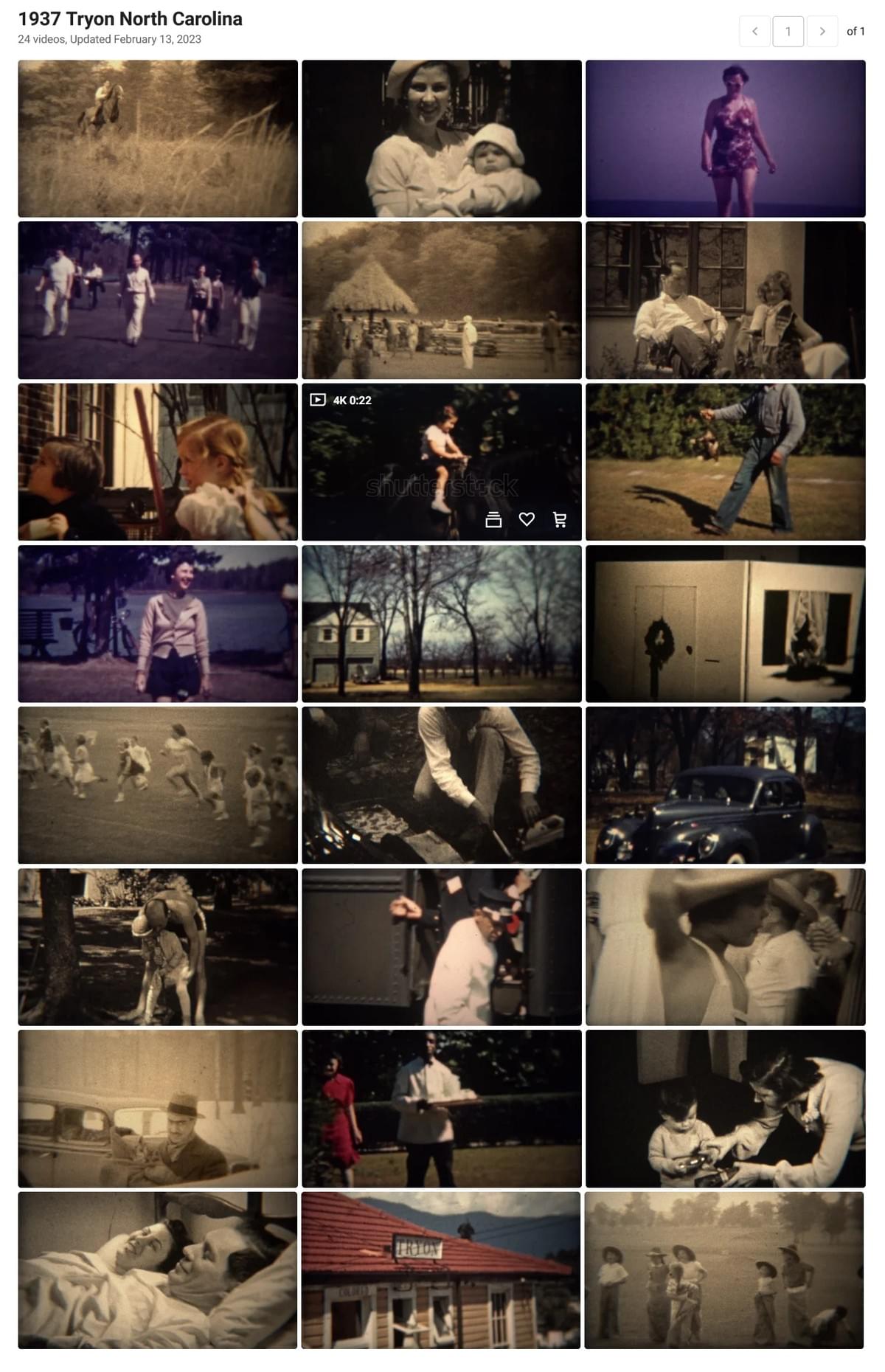
1937 Tryon North Carolina
Delve into the tranquil embrace of 8mm home movies that beautifully narrate the charm of Tryon, North Carolina, nestled in the heart of the Blue Ridge Mountains during the memorable year of 1937. Discover a forgotten chapter in the annals of time and experience how this idyllic mountain community unraveled the enchanting stories that shaped the character of a closely bonded settlement thriving with creativity amid the economic hardship of the Great Depression.
Step foot into a land of creativity and inspiration as artists, writers, and musicians gravitated toward the lush and idyllic town. Pictorial accounts of a thriving art community take you on an enthralling artistic exploration with the foundation of Tryon Painters and Sculptors, whose roots originate during these golden years of unyielding vision and talent. With its majestic hills, lush greenery, and serene river, this rustic oasis presented an environment ripe with the musings of Mother Nature herself and served as an exquisite muse for numerous artists and their expressive pursuits.
Let your visual senses absorb the captivating retelling of an intellectually vibrant Tryon, as local libraries and bookstores facilitated gatherings where thoughts flowed freely and inspiring narratives wafted through the mountain air. Libraries like Lanier Library stood at the core of community life, igniting discourse and nurturing Tryon's passion for literary creations during this tumultuous period of financial strain.
Unravel an evocative tale of Appalachian melodies as Tryon's musical prowess rings in every corner of this captivating film collection, taking viewers back to the musical traditions celebrated in 1937 Tryon. Rooted deep within Appalachian folklore, local musicians uncovered a symphony that weaves an enchanting backdrop of mountainous notes, serenading viewers back in time.
Stories from this rare 8mm archive convey the remarkable unity and spirit of cooperation between the citizens of Tryon as the impact of the Great Depression lingered on. Pulling strength from one another, working to nourish the town's collective creativity and ambition, these proud mountain residents nurtured their thriving community through grit and untamable optimism. Farming, primarily surrounding apple and peach production, provided vital resources as an additional layer that solidified this haven's shared economy during economically testing times.
To enjoy and fully embrace these enriched and enthralling depictions of Tryon, North Carolina during the apex of 1937, follow these captivating and unparalleled threads: 1937 Tyron Stock Film. Indulge yourself and appreciate this forgotten chapter in Tryon's past by diving deep into its intriguing stories of resilience, art, community, and untamed mountain spirit.
In closing, explore and immerse yourself in the spellbinding depiction of 1937 Tryon, a vivacious and artistically proficient mountain settlement whose unity, perseverance, and innovative creativity emerged like a phoenix among the turmoil of the Great Depression. Enveloped in enchanting natural beauty, Tryon became the quintessence of rural American communities with their tenacity, warmth, and creative expressions that flourish through times of trial.Retro clips filmed in Tyron?
1937 in Tyron, North Carolina USA
© 2024
